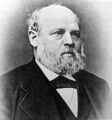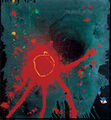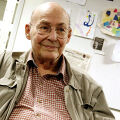Template:Selected anniversaries/January 24: Difference between revisions
No edit summary |
No edit summary |
||
| Line 1: | Line 1: | ||
<gallery> | <gallery> | ||
||AD 41: Roman Emperor Caligula, known for his eccentricity and sadistic despotism, is assassinated by his disgruntled Praetorian Guards. The Guard then proclaims Caligula's uncle Claudius as Emperor | ||AD 41: Roman Emperor Caligula, known for his eccentricity and sadistic despotism, is assassinated by his disgruntled Praetorian Guards. The Guard then proclaims Caligula's uncle Claudius as Emperor. Pic. | ||
||1679: Christian Wolff born ... philosopher and academic. Pic. | ||1679: Christian Wolff born ... philosopher and academic. Pic. | ||
||1754: Andrew Ellicott born ... surveyor and urban planner ... helped map many of the territories west of the Appalachians, surveyed the boundaries of the District of Columbia, continued and completed Pierre (Peter) Charles L'Enfant's work on the plan for Washington, D.C., and served as a teacher in survey methods for Meriwether Lewis. Pic. | |||
File:Karl Georg Christian von Staudt.jpg|link=Karl Georg Christian von Staudt (nonfiction)|1798: Mathematician [[Karl Georg Christian von Staudt (nonfiction)|Karl Georg Christian von Staudt]] born. He will use synthetic geometry to provide a foundation for arithmetic. | File:Karl Georg Christian von Staudt.jpg|link=Karl Georg Christian von Staudt (nonfiction)|1798: Mathematician [[Karl Georg Christian von Staudt (nonfiction)|Karl Georg Christian von Staudt]] born. He will use synthetic geometry to provide a foundation for arithmetic. | ||
| Line 8: | Line 10: | ||
||1835: Slaves in Salvador da Bahia, Brazil, stage a revolt, which is instrumental in ending slavery there 50 years later. | ||1835: Slaves in Salvador da Bahia, Brazil, stage a revolt, which is instrumental in ending slavery there 50 years later. | ||
||1848: California Gold Rush: James W. Marshall finds gold at Sutter's Mill near Sacramento. | ||1848: California Gold Rush: James W. Marshall finds gold at Sutter's Mill near Sacramento. Pic. | ||
||1852: Herman Haga born ... physicist. Pic. | ||1852: Herman Haga born ... physicist. Pic. | ||
Revision as of 16:46, 25 March 2019
1798: Mathematician Karl Georg Christian von Staudt born. He will use synthetic geometry to provide a foundation for arithmetic.
1879: Glassblower, physicist, and inventor Johann Heinrich Wilhelm Geißler dies. He invented the Geissler tube, made of glass and used as a low pressure gas-discharge luminescence tube.
1960: Film director and arms dealer Egon Rhodomunde raises funds for new film about the upcoming Goldsboro B-52 crash.
1961: Goldsboro B-52 crash: A bomber carrying two H-bombs breaks up in mid-air over North Carolina. The uranium core of one weapon remains lost.
1974: Industrialist, public motivational speaker, and alleged crime boss Baron Zersetzung says he is "confident that the Goldsboro B-52 crash is a sound business investment."
1978: Soviet satellite Kosmos 954, with a nuclear reactor on board, burns up in Earth's atmosphere, scattering radioactive debris over Canada's Northwest Territories. Only 1% is recovered.
1988: Mathematician and academic Werner Fenchel dies. He established the basic results of convex analysis and nonlinear optimization theory which would, in time, serve as the foundation for nonlinear programming.
2016: John Hoyland's Lebanon stolen in broad daylight by alleged supervillain Gnotilus.
2016: Cognitive scientist and artificial intelligence researcher Marvin Minsky dies.
2018: Steganographic analysis of Blue Foliage unexpectedly reveals "at least four hundred kilobytes" of previously unknown Gnomon algorithm functions.
2017: Advances in zero-knowledge proof theory "are central to the detection and prevention of crimes against mathematical constants," says mathematician and crime-fighter Janet Beta.









